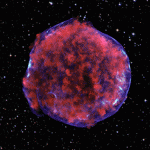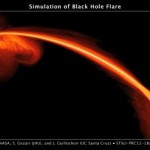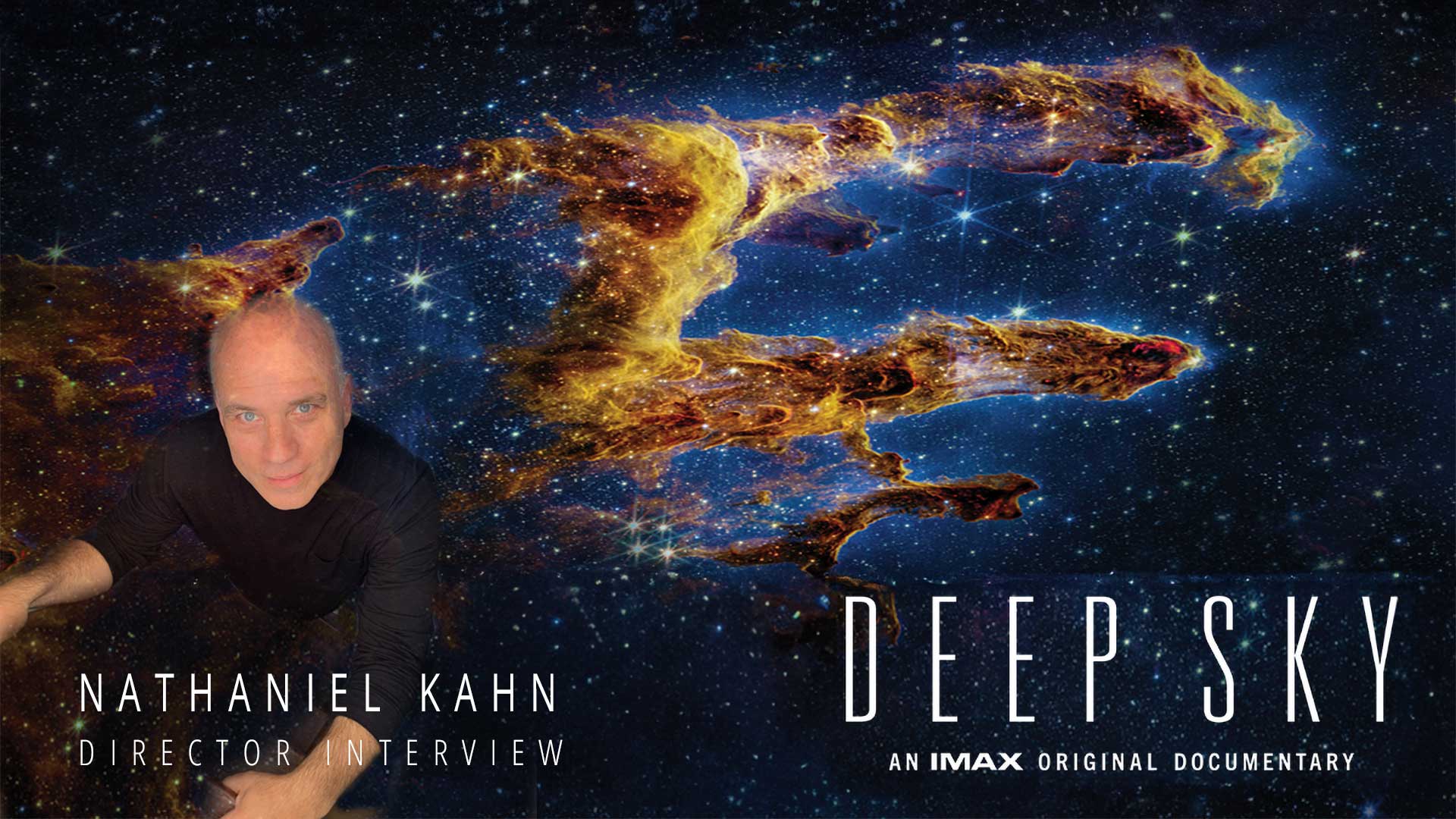
Deep Sky is directed by Oscar-nominated filmmaker Nathaniel Kahn: a new film which uses the scale of giant IMAX screens to take audiences on a journey to the beginning of time and space, to never-before-seen cosmic landscapes, and to recently discovered exoplanets around other stars.
Showing at the IMAX theatres in Sydney & Melbourne, and opening across the US & Canada on April 19, Deep Sky follows the high-stakes global mission to build and launch the James Webb Space Telescope in an attempt to answer the biggest questions of all – Where did we come from? How did the universe begin? Are we alone?
We had some questions of our own to ask Nathaniel Kahn, the Director of this eye-popping and mind-bending space adventure.
SCIENCE ILLUSTRATED: This is your fifth space telescope movie: what’s the fascination for you?
NATHANIEL KAHN: Not only space telescopes: they’ve been about ground-based observatories too. My fascination with astronomy began when I was about five. We had a neighbour who was an eye doctor, and he had an old brass refractor – quite a good one – and he would take it out in the evenings and invite people over to look through it. I remember the night that I first saw the moon through that telescope. It totally entranced me. The craters were so real, you could imagine going there and walking around inside them, and peering over the rim into them. And then to see the rings of Saturn was astonishing. It’s a strange feeling to know that you are actually seeing those rings – not a picture of them, but the real thing.
Actually, telescopes and cameras are related in how they heighten your sense of reality. When I’m filming something, I am very aware that I’m capturing reality happening right in front of me. It’s a precious thing; this moment will never come again and I am bearing witness to it. Telescopes and cameras create a zone of hyper-focus, where you are intensely aware of the connection between yourself and what you are observing.
SI: How does an IMAX format change the film-making process?
NATHANIEL KAHN: Making my first IMAX film has been enormously exciting but also very humbling. There was so much to learn both technically and artistically. The first cut of the film that we looked at on the IMAX screen didn’t really work – there were too many close-ups and the cutting was too fast. We are used to editing for smaller formats and you develop an innate sense of shot duration, but with IMAX, we learned that we really needed to slow the pace down and use fewer shots that last longer. You want people to be able to look around the screen; in fact looking around the screen is one of the key ways audiences enjoy IMAX films. They need time to explore an image, to luxuriate in it, to fall into it. It’s like the theatre. When you go to a play, you find your eyes wandering all around the stage, not just focusing on the main action. There are things on the periphery that are just as interesting and revealing as things happening centre-stage.
I also found the aspect ratio of IMAX very interesting to play with. We used a reduced frame size for the interviews in the film, so that when we go to space you really feel the whole visual field open up in front of you. It emphasises the dramatic power of the vertical height of the IMAX image.
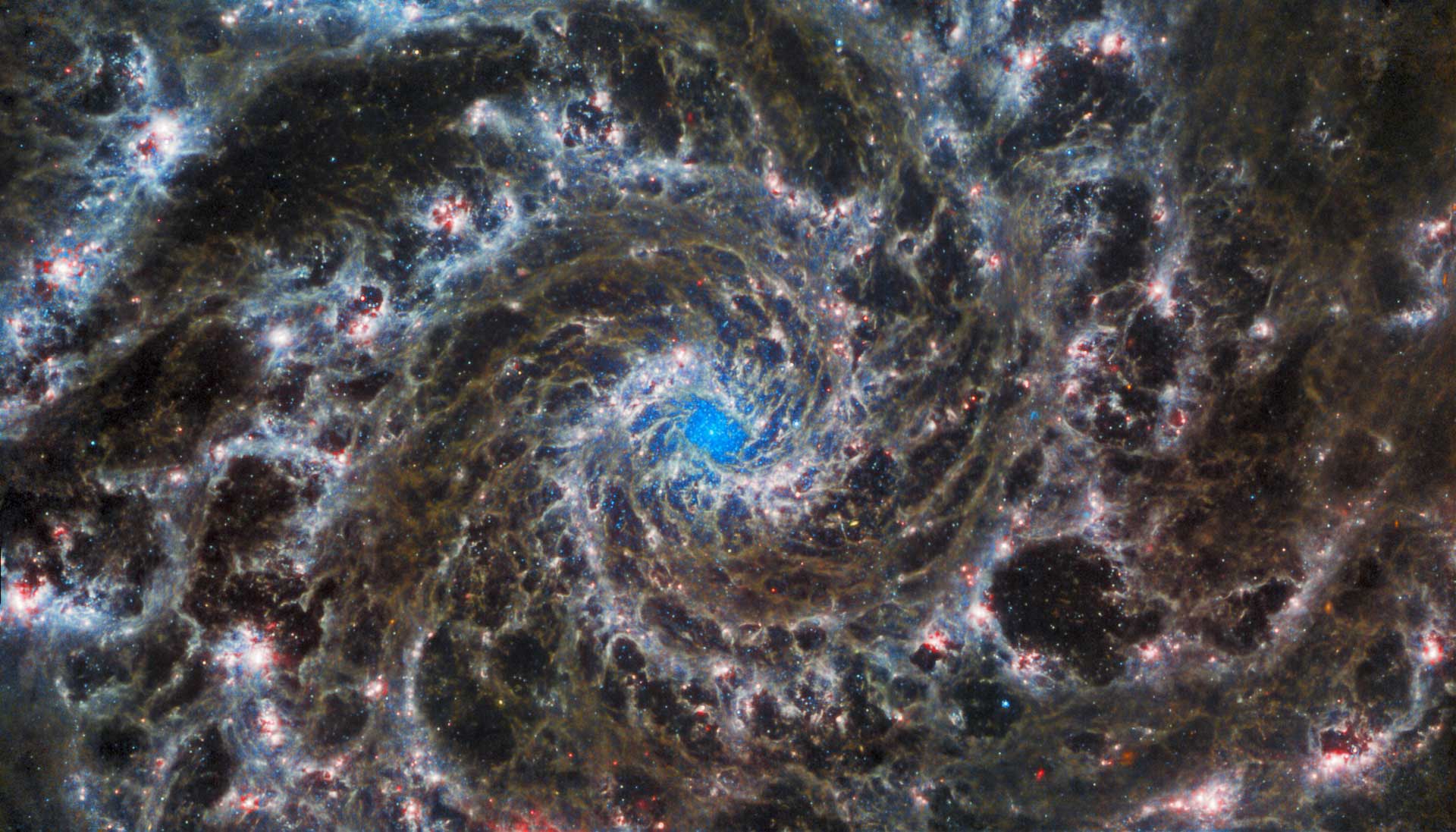
Featured in the IMAX documentary DEEP SKY, this image from JWST shows the heart of M74, otherwise known as the Phantom Galaxy. M74 is a particular class of spiral galaxy known as a ‘grand design spiral’, meaning that its spiral arms are prominent and well-defined, unlike the patchy and ragged structure seen in some spiral galaxies. Image: NASA
SI: Many of your other movies have covered the arts: the art market, a pianist, your father’s architecture. Do you find connections between the arts and big science like the JWST?
NATHANIEL KAHN: I find that artists and scientists are often similar in personality. They are, for the most part, motivated by passion, not by financial reward. They are also risk takers, willing to risk everything for an uncertain outcome, because they believe in something bigger than themselves and they want to find out what’s over the next hill. I’m drawn to people like that.
There is a difference, though, when it comes to how they work. Many scientists nowadays – like the ones who built and operate JWST – work in teams. They spend a lot of time solving problems together, whereas most visual artists work alone and have to face problems by themselves. Of course the performing arts and filmmaking are different – we are sort of a combination of the two worlds. There is a great deal of individual soul-searching and creative work that happens solo, but in the end, putting on a play or making a film is a collaborative endeavour.
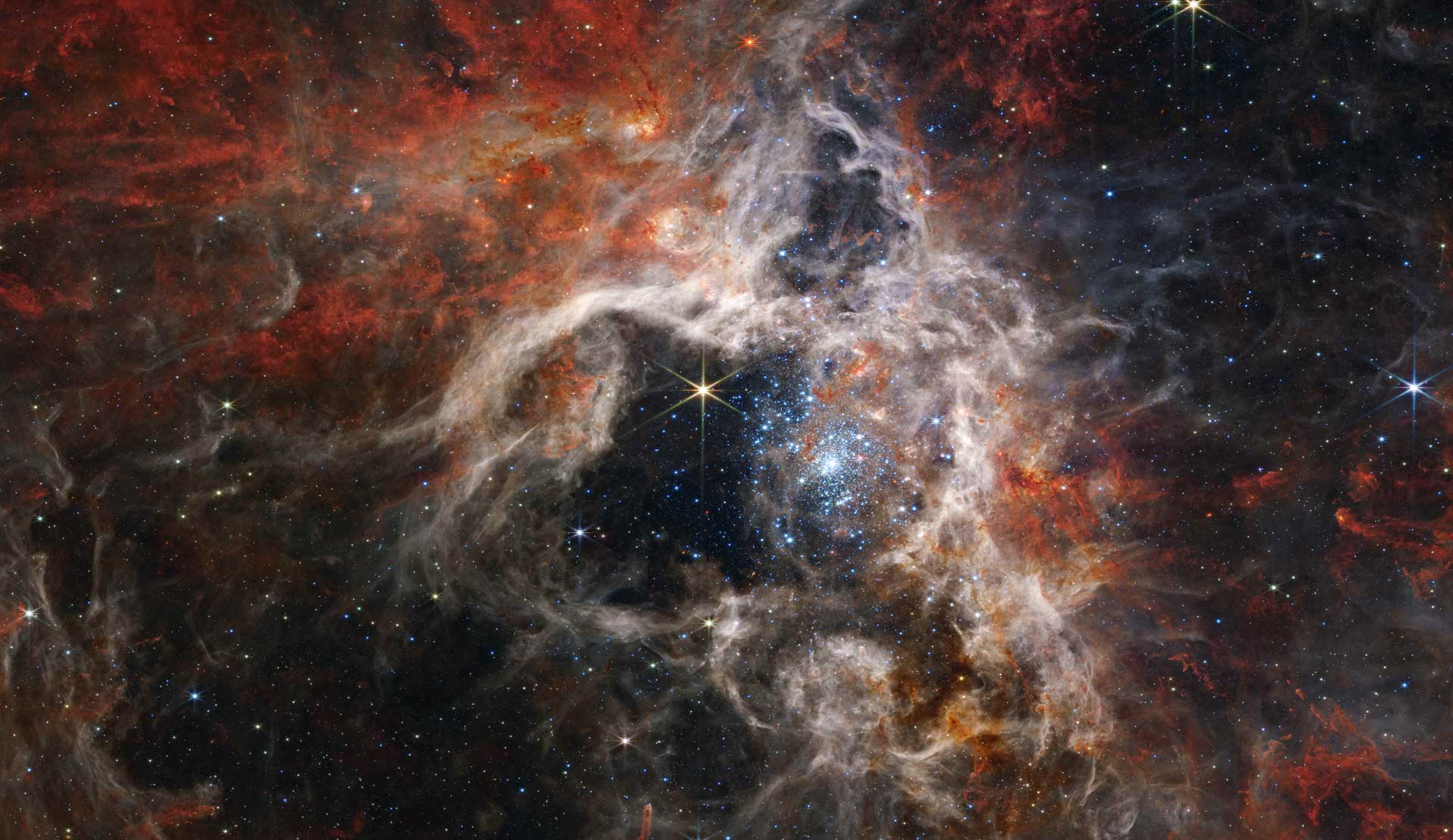
Featured in the IMAX documentary DEEP SKY, this mosaic image stretches 340 light-years across. JWST’s Near-Infrared Camera (NIRCam) displays the Tarantula Nebula star-forming region in a new light, including tens of thousands of never-before-seen young stars that were previously shrouded in cosmic dust. Image: NASA
SI: What do you see as humankind’s biggest achievement?
NATHANIEL KAHN: Actually achievement doesn’t interest me nearly as much as capability. Achievement is about yesterday, capability is about tomorrow. I think perhaps our greatest capability as human beings is our ability to work together to create things that we can’t do alone. The ability to embrace a stranger — someone you’ve never met before — and say, “We’re trying to do this thing and you have certain skills and I have certain skills, let’s do this together.” If you extend this to a global scale, it pretty much means that we have the capability to do virtually anything — like, say, solving climate change.
But here’s the tricky part: the capability is not enough, you have to have the will to do it. That seems to be one of our biggest problems in this contemporary era: getting beyond the things that keep us apart and finding the collective will to address big challenges or big dreams. A huge, multiyear, multigenerational project like JWST reminds us that when we do have the collective will to do something, we are able to do just about anything.
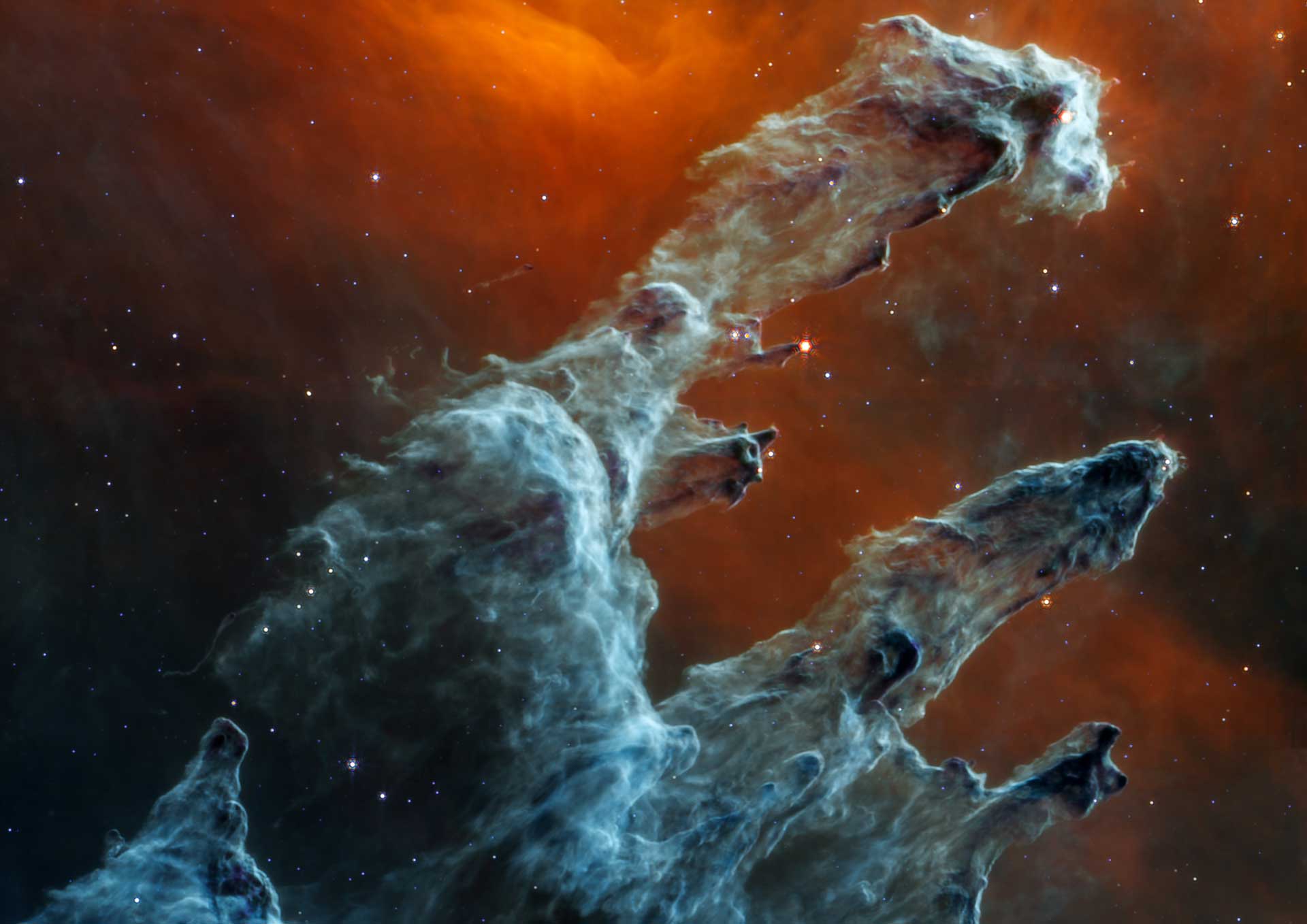
Featured in the IMAX documentary DEEP SKY, JWST’s mid-infrared view of the Pillars of Creation strikes a chilling tone. Thousands of stars that exist in this region disappear – and seemingly endless layers of gas and dust become the centrepiece. The detection of dust by Webb’s Mid-Infrared Instrument (MIRI) is extremely important – dust is a major ingredient for star formation. Image: NASA
SI: Which scientific discovery was the most recent to bowl you over?
NATHANIEL KAHN: I was bowled over by the discovery that the universe is expanding at an accelerating rate. The discovery won the Nobel Prize several years ago, but what is actually causing this accelerated expansion, we still don’t know. Physicists call it “Dark Energy,” but what Dark Energy is or how it works is still an enormous mystery. I was also bowled over by the discovery of gravity waves, which also won the Nobel Prize. These are two very different kinds of discovery and they’re exciting in different ways. The discovery of Dark Energy used an existing technology and found something unexpected, and the detection of Gravity Waves required the invention of new instruments to find something previously predicted.
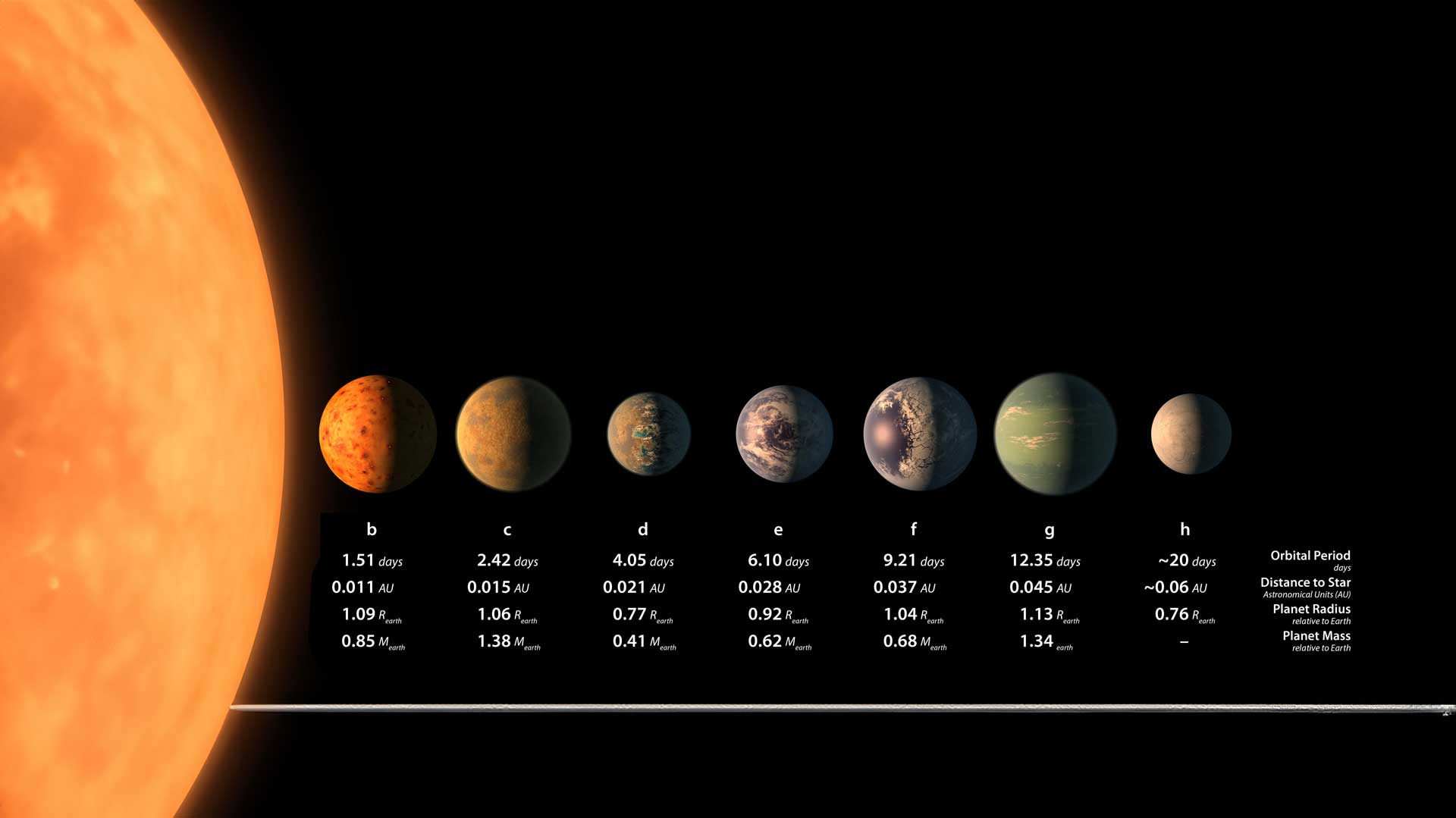
Artist concepts of the seven exoplanets of the TRAPPIST-1 system, with their orbital periods, distances from their star, radii and masses as compared to those of Earth. Image: NASA/JPL-Caltech
SI: What are the big unanswered questions?
NATHANIEL KAHN: The question that has always haunted us is – “are we alone in the universe?” 2300 years ago Epicurus speculated that there must be many worlds out there, and he even imagined other beings inhabiting them, but he had no way of finding out if anyone else was actually out there. And of course extraterrestrial life is a staple in science fiction, from HG Wells to Star Trek and beyond – but until very recently we didn’t even know if there were any planets beyond our own solar system.
In the last two decades, all that has changed. Exoplanets were discovered, and a whole new scientific field was born – and it has become one of the hottest areas in all of science. We now know that virtually every star in the sky has at least one planet around it, and some stars have multiple planets around them, like the Trappist system that we talk about in Deep Sky. JWST is able to investigate some of these exoplanets for possible habitability, but we will need bigger and more powerful telescopes to really investigate the candidates out there.
The point is we now have the capability to build instruments that can answer this huge question. Imagine the day we wake up to the headlines that a potentially habitable exoplanet has been found, or direct evidence of life itself has been found by a NASA probe on a moon of Jupiter or Saturn or under the surface of Mars. I think it would change everything.
SI: Who would you like to meet in person – dead or alive?
NATHANIEL KAHN: My father. He died when I was eleven and I made the film My Architect about him, but I’d like to experience the difference between the person I remember and the person I would meet as an adult. Of course I would have some tough questions for him as well.
Interview: Jez Ford. DEEP SKY is showing at the IMAX theatres in Sydney & Melbourne, and opens across the US & Canada on April 19.



